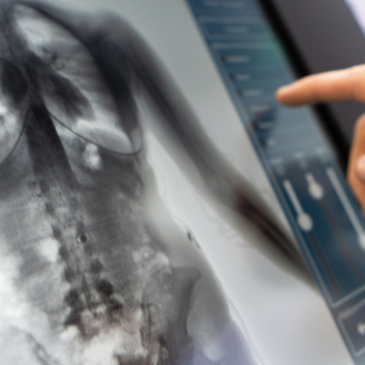ODSecurity2020-06-04 09:43:44
UK Guidelines Released on the Use of X-Ray Scanners to Detect Concealment in Male Prisoners
Prison estates worldwide confront the problem of drugs; drug dependency, drug use, drug smuggling, and drug concealment.
This month marks the release of the “Policy Framework” document on the use of X-ray body scanners on adult male prisoners (over 18) in UK Prisons, both Her Majesty’s Prison and Probation Service (HMPPS) and Contracted Prison Providers.
Some prisoners attempt to intentionally undermine HMPPS’s security search methodologies by hiding contraband inside their bodies. HMPPS has a duty to protect prisoners, those working in or visiting prisons, as well as the public, by taking steps to prevent the importation and supply of drugs and other contraband into prisons.
Recently, HMPPS’s Security, Order and Counter-Terrorism (SOCT) Directorate has, with prisons, conducted technical tests of X-ray body scanner equipment for its effectiveness in confirming if a prisoner suspected of internally concealing contraband is doing so, or not.
The document gives clear instruction and guidance from the UK’s Ministry of Justice (MoJ) and HMPPS on the procurement, installation, and use of X-ray body scanners in prisons, where prisoners are believed to be engaged in concealing contraband internally.
Although this document does not replace or change any of the requirements of “PSI 07/2016 Searching of the Person and an X-ray body” it does provide the information needed, and the minimum required, to enable prisons to operate a legal and effective regime of the operation of an X-ray body scanner.
Within these guidelines are the strict criteria that a body scan must not be used as an alternative to a full or rub down search and that the Governors must ensure that the use of all X-ray body scanners are consistent with both this Policy Framework and the policy on the use of technical search aids more generally, ensuring that processes and arrangements for their use are reflected in their “Local Searching Strategy”.
If used as part of a searching strategy and with a trained, professional staff group, X-ray body scanning technology can provide an effective means of confirming the intelligence or reasonable suspicion that a prisoner is attempting to conceal contraband internally.
This document also provides strict guidelines regarding the practices using Ionizing Radiation, Health, and Safety at Work and the “Justifying Authority” required before any use of X-ray technology in prisons.
By following the mandatory actions within this Policy Framework, it is expected that prisons can:
- Improving the capability to detect contraband smuggled by way of internal concealment
- Contribute to a reduction of drugs and other contraband being smuggled into or out of a prison
- Contribute to a reduction in the risks posed by contraband being smuggled into or out of a prison
- Reduce the risk that concealed items may cause harm to the prisoner
- Deter exploitation of vulnerable prisoners to convey concealed items
- Provide the basis for legal compliance to manage the safety and other health risks associated with the use of ionising radiation (X-ray)
ODSecurity ticks all the boxes when it comes to adhering to the guidelines issued by “UK’s Ministry of Justice (MoJ) and HMPPS on the procurement, installation, and use of X-ray body scanners in prisons, where prisoners are believed to be engaged in concealing contraband internally.” Their highly successful range of SOTER Body Scanners is operational in over 300 prisons and detention facilities worldwide.
The SOTER RS provides a top to toe full body scan and can detect all types of contraband whether ingested or concealed, while the SOTER TS is designed specifically for torso scanning to detect if any contraband has been swallowed.
Both the SOTER RS and TS are ultra-low radiation scanners making it extraordinarily safe for both prison personnel and the person being scanned.
For comparison purposes;
In fact, on average we are all exposed to 2,000 µSv naturally per year.
The HMPPS Policy Framework document states that “There is evidence that the scan will not cause that individual to exceed the maximum annual dosage constraint of 700 µSv per individual in the current calendar year” – in the SOTERS highest level of 2,5 µSv – the prisoner would have to be scanned 280 times in a calendar year to reach the maximum annual dosage allowance.
The SOTER Central Database registers the cumulative radiation of a person scanned over time, the detected contraband per scan, and data records to be accessed by other facilities.
In less than two minutes, the 23” high-resolution touch screen will show a medical standard Dicom Image of contraband detected, and the SOTER’s Multi Dynamic Detector negates any need for a second X-ray.
The SOTER range of X-ray body scanners will “confirm if a prisoner suspected of internally concealing contraband is doing so, or not” thereby complying with the HMPPS’s Security, Order and Counter-Terrorism (SOCT) Directorate.
The SOTER has a proven track record in meeting and exceeding the safety requirements of prison and custody centres worldwide.
The full document can be viewed here: Use of X-ray Body Scanners (Adult Male Prisons)
